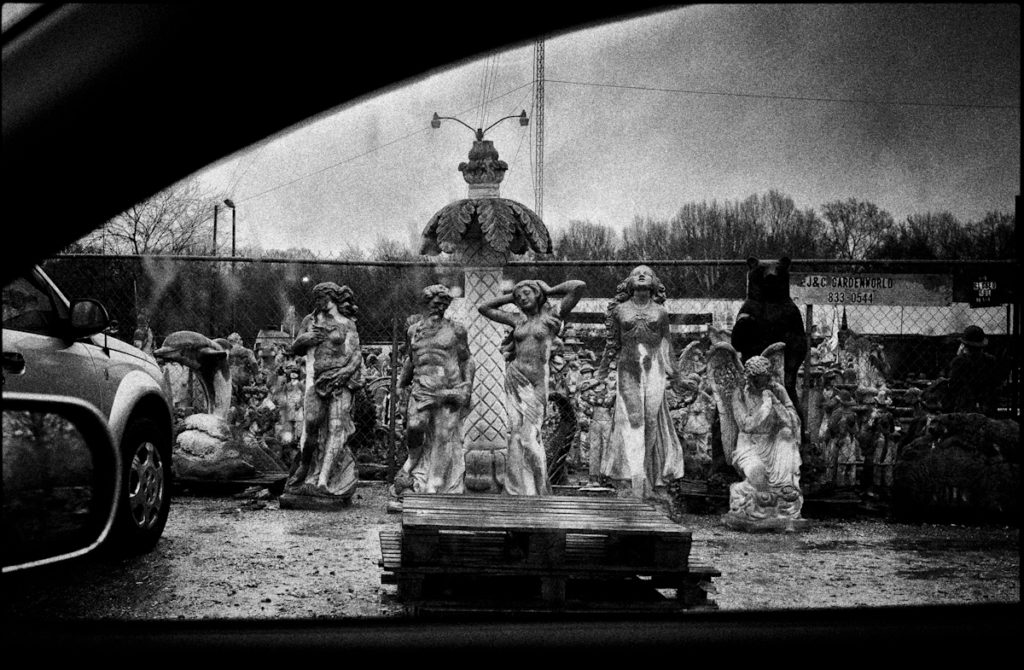
Lee Miller, Portrait of Space, 1937
I love the photo above, taken by Surrealist ‘Art Photographer’ and photojournalist Lee Miller. There’s something dislocating about it, something difficult to read at first glance, something disorienting about the reality on which you as the viewer stand, a function of the questionable dimensionality of the photo itself. Produced by the indexical process of analog photography, it’s something more than an indexical account of the real, a view turned to a subjective vision by what appears to be an interplay of literal and fictive frames.
Portrait of Space is a “mise en abyme” or an image-within-an-image. It’s a visual puzzle, a play on ambiguity and the permeability of boundaries. The title itself is part of the puzzle. What’s the subject of this ‘portrait?’ Given the multiple frames, it’s up to you to identify what space is the subject. Is it all of it, or some part of it? What can be considered inside and what outside?
Pretty cool that all of that can be summoned up via an indexical photograph that, in the words of Susan Sontag, “stencils off the real”. It’s testament to the infinite creative possibilities inherent in our simple ‘documentary’ medium.
In actuality, the photo is taken within a tent in Egypt. The viewer looks out onto a desert, through a window with a torn mosquito net, the tear itself serving as a frame. A wooden picture frame hangs from the net above the tear, creating a second frame nested with the window frame which itself is nested within the frame of the photo. The appears to be a stone border demarcating the landscape within the netting tear and the window frame. Beyond lies desert. Above, occupying various ratios of different frames, and about 2/3 of the image, is sky with wispy clouds.
*************

I realize, in reviewing my work over the years, the “mise en abyme” trope is something I’ve been intuitively drawn to since I started photographing things. Maybe it has something to do with having an early education in the arts, where one learns to think of visual art, whether painting or photography, as layered abstraction, although I find that I was doing things like shooting out car windows or using windows as frames within photos since I was 12. So who knows?
Of course, it’s at the root of whatever is inspiring me to publish a book like Car Sick, and hopefully it’s part of the reason many of you good folks have reserved a copy. In any event, the photo above is something more than some funky statues in some god-forsaken place somewhere; it’s the view out a car window of those statues, which introduces a layer of complexity absent in the straight shot. Now the photo infers a viewer of those statues, a viewer in a vehicle, the vehicle itself in a certain relationship to the statuary, the viewer in a certain relationship to both the statues and the vehicle. The interpretive possibilities of the photo have expanded exponentially, all with the inclusion of the sense of a car window that brackets the view.
So that’s the idea I’m selling you in Car Sick. Think of it not as a collection of marginally interesting, semi-competent views out of car windows – think of it rather as a brilliant collective “mise en abyme“, a celebration of image-within-image, “in which notions of inside and outside, are endlessly placed and displaced”, as critic Patricia Allmer noted of Miller’s work, challenging you the viewer with its layered details, made possible by the artist’s [that’s me!] “unique sense for presenting a slice of dislocated reality. “

Yeah, it’s a satisfying technique when you can find something simple to use as frame-within-frame:
http://www.roma57.com/uploads/4/2/8/7/4287956/d-323-bardot-web-creation_orig.jpg
The late Peter Lindberg was very fond of making use of a music stand, as watching his videos will show. But then, he had teams of keen coolies to help with the heavy lifting…
😉
Very nice, Rob.
Thanks, Tim; it was a double blessing insofar as I was also an ardent fan. She was truly something else.
😉